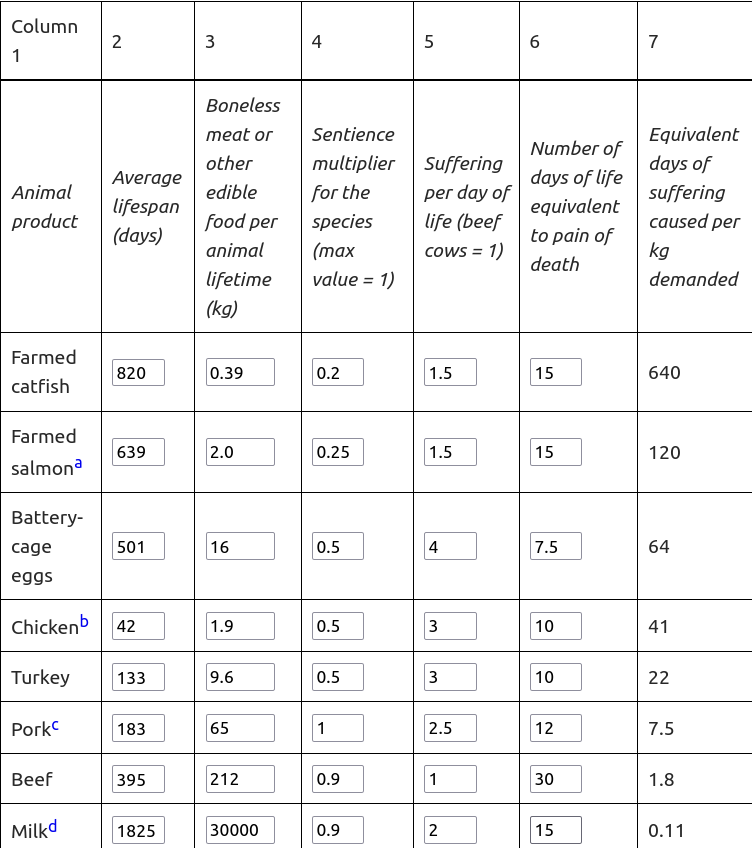Are poultry birds really important? Yes...
By Vasco Grilo🔸 @ 2022-06-19T18:24 (+13)
The negative utility of poultry lives seems to exceed the utility of human lives for the mean country.
Calculations
Negative utility of poultry lives as a fraction of the utility of human lives for the mean country: R = RN*RU = 1.95[1] (> 1).
- Ratio between the number of poultry birds and humans for the mean country: RN = 3.78.
- Negative utility per unit time of poultry life as a fraction of the utility per unit time of human life: RU = -UP/UH = 51.6 %.
Question Mark @ 2022-06-21T05:03 (+2)
Here's a chart of the amount of suffering caused by different animal foods that Brian Tomasik created. Farmed fish may have even more negative utility than chicken, since they are small and therefore require more animals per unit of meat. The chart is based on suffering per unit of edible food produced rather than suffering throughout the total population, and I'm not sure what the population of farmed fish is relative to the population of chickens. Chicken probably has more negative utility than fish if the chicken population is substantially higher than the farmed fish population. Beef is probably the meat with the lest negative utility.

Vasco Grilo @ 2022-06-21T11:37 (+2)
Thanks for commenting! I am aware of that article, but you have just nudged me to make the calculation. Based on the Weighted Animal Welfare Index of Charity Entrepeneurship:
- The "total welfare score" (WS) is:
- Lower than 100 for humans (as that is the defined maximum).
- -44 for "FF fish – traditional aquaculture".
- -56 for "FF broiler chicken".
- The "estimated population size" (P) is:
- 1 T for "FF fish – traditional aquaculture".
- 22 G for "FF broiler chicken".
- Consequently, the total welfare (= WS*P) is:
- 44 T for "FF fish – traditional aquaculture".
- 1.2 T for "FF broiler chicken".
- Lower than 0.80 T (= 100 * 8.0 G) for humans.
This suggests the negative utility of FF fish is:
- 40 times (= 44/1.232) as large as that of FF chickens.
- More than 60 times (= 44/0.80) as large as that of humans.